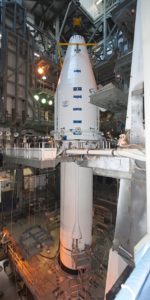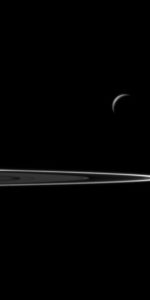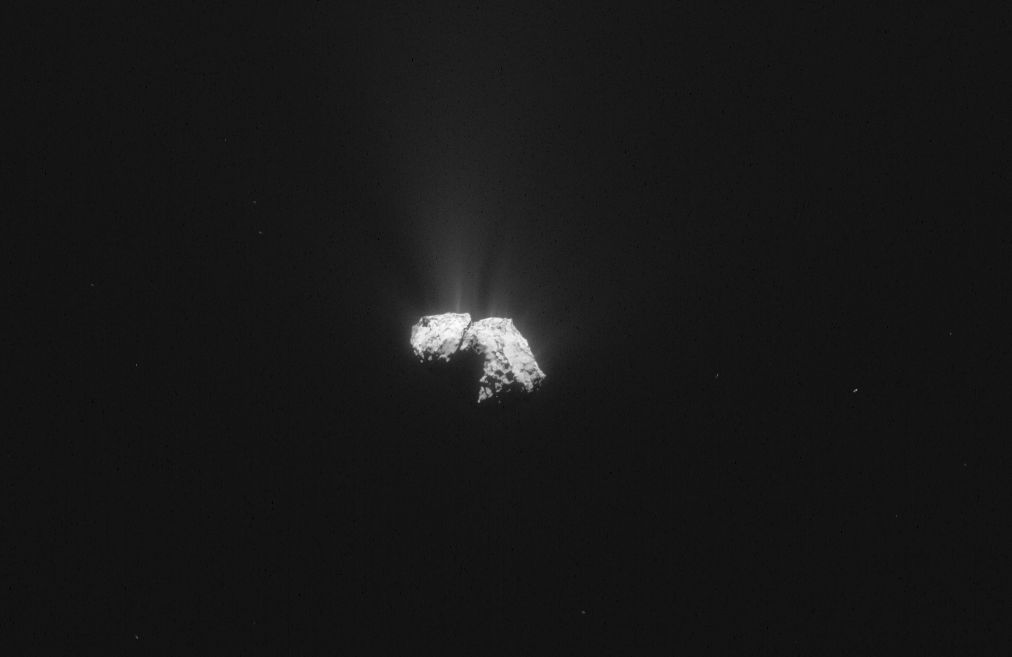
The European Space Agency’s (ESA) Rosetta spacecraft has uncovered yet another first, capping off a year of milestones: Yesterday it was announced that it made the first detection of molecular oxygen at its target comet, Comet 67P/Churyumov–Gerasimenko. This latest announcement comes over a year after the spacecraft first arrived at its destination, over 10 years following its launch. In that time, Rosetta has returned surprising scientific findings; in addition, its “little brother,” lander Philae, made the first-ever soft landing upon a comet’s surface. Philae returned most of its science package before falling into a period of hibernation that was briefly interrupted this summer.
ESA stated that the first in situ detection of oxygen molecules was made by Rosetta as it analyzed Comet 67P while it was “outgassing,” which may suggest that it was part of the comet during its formation. While being a common element, it was emphasized that oxygen is hard to “track down” and detect as it breaks down easily to react with other atoms and molecules.
Yesterday’s announcement is significant in that comets are believed to be “relics” of the embryonic Solar System. The analyses were made utilizing Rosetta’s ROSINA-DFMS instrument (Rosetta Orbiter Spectrometer for Ion and Neutral Analysis Double-Focusing Mass Spectrometer) between September 2014 and March 2015, as the comet was headed toward the Sun. In August, just over a year after its arrival, Rosetta became the first spacecraft to observe a comet a perihelion (its closest point to the Sun).
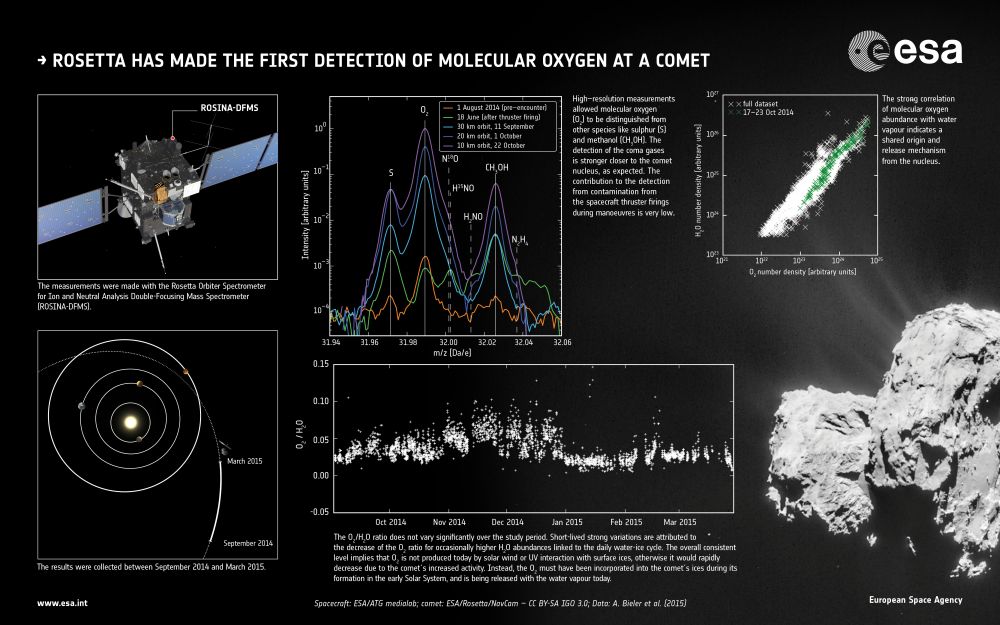
Kathrin Altwegg of the University of Bern, and principal investigator of the ROSINA instrument, underscored the unexpected nature of this discovery: “We weren’t really expecting to detect [oxygen] at the comet – and in such high abundance – because it is so chemically reactive, so it was quite a surprise. It’s also unanticipated because there aren’t very many examples of the detection of interstellar [oxygen]. And thus, even though it must have been incorporated into the comet during its formation, this is not so easily explained by current Solar System formation models.”
In addition, Rosetta’s science team also investigated the relationship between the molecular oxygen and water emanating from the comet as it approached the Sun, on its way to perihelion. The paper published in Nature stated how it can be theorized that the molecular oxygen may have been integrated into the comet from its formation during the Solar System’s earliest days, with models explaining how the oxygen became part (and remained part) of the comet over time. ESA’s Rosetta project scientist Matt Taylor emphasized the significance of the oxygen discovery: “This is an intriguing result for studies both within and beyond the comet community, with possible implications for our models of Solar System evolution.”
The full report about this discovery and its implications in early solar system development (“Abundant molecular oxygen in the coma of Comet 67P/Churyumov–Gerasimenko”) can be found in the journal Nature, published today.
At present time, Rosetta is orbiting Comet 67P at a distance of approximately 433 kilometers (269 miles) from the comet’s nucleus. The spacecraft continues to observe the comet from a distance; as the comet approached perihelion this summer, Rosetta “stepped back” from the comet as increased activity posed a debris danger to the spacecraft.
The announcement of the molecular oxygen comes after a year of milestone events for Rosetta. Launching from Europe’s Spaceport aboard an Ariane 5 launch vehicle in Kourou, French Guiana, in 2004, the spacecraft made its long journey through deep space, at one point entering a 31-month-long hibernation period. The spacecraft and its lander was deemed as healthy following its early 2014 “wake-up call.”
After becoming the first spacecraft to orbit a comet in August 2014, in November that year its lander Philae managed to return most of its science package after landing (after bouncing twice!) in a craggy, dark spot on the comet, named “Abydos.” While Philae fell into hibernation around 72 hours after landing due to decreasing solar energy, it infamously “woke up” in June, seven months after it was believed to have been silenced for good. While communications were sporadic at best and have halted since July, Philae’s team at Germany’s DLR is still making efforts to communicate with Philae.
While data from Rosetta and Philae will be analyzed by the scientific community for years to come, they have returned surprising science results from Comet 67P. A previous AmericaSpace article discussed Philae’s first findings, which included a “surface littered with coarse debris,” organic compounds that have not previously been detected in comets, hard soil that perhaps contributed to the lander’s several touchdowns, and no discernible magnetic field. In March, the Rosetta orbiter revealed that molecular nitrogen was detected at the comet; in addition, recent scientific findings have led to theories about how the comet got its distinctive, double-lobed shape (rendering it “duck-like” in appearance). Rosetta also showed how features on the comet changed “dramatically and rapidly” as it approached the Sun.
In June, it was announced that the Rosetta mission was extended through September 2016; it was originally slated to end in December this year. Undoubtedly, the spacecraft (and hopefully, its lander nestled on the surface of Comet 67P) will continue to reveal a cometary world unlike any other.
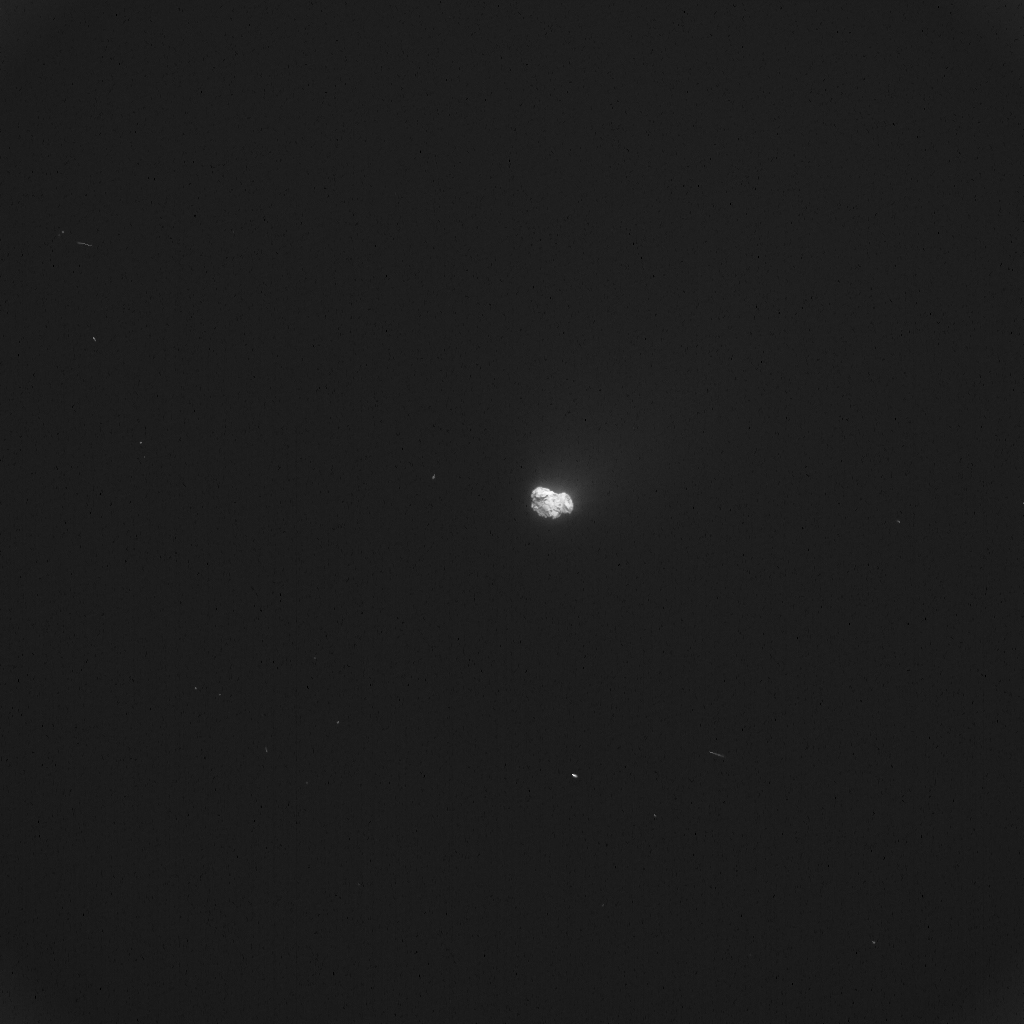
Want to keep up-to-date with all things space? Be sure to “Like” AmericaSpace on Facebook and follow us on Twitter: @AmericaSpace
Missions » Rosetta »



